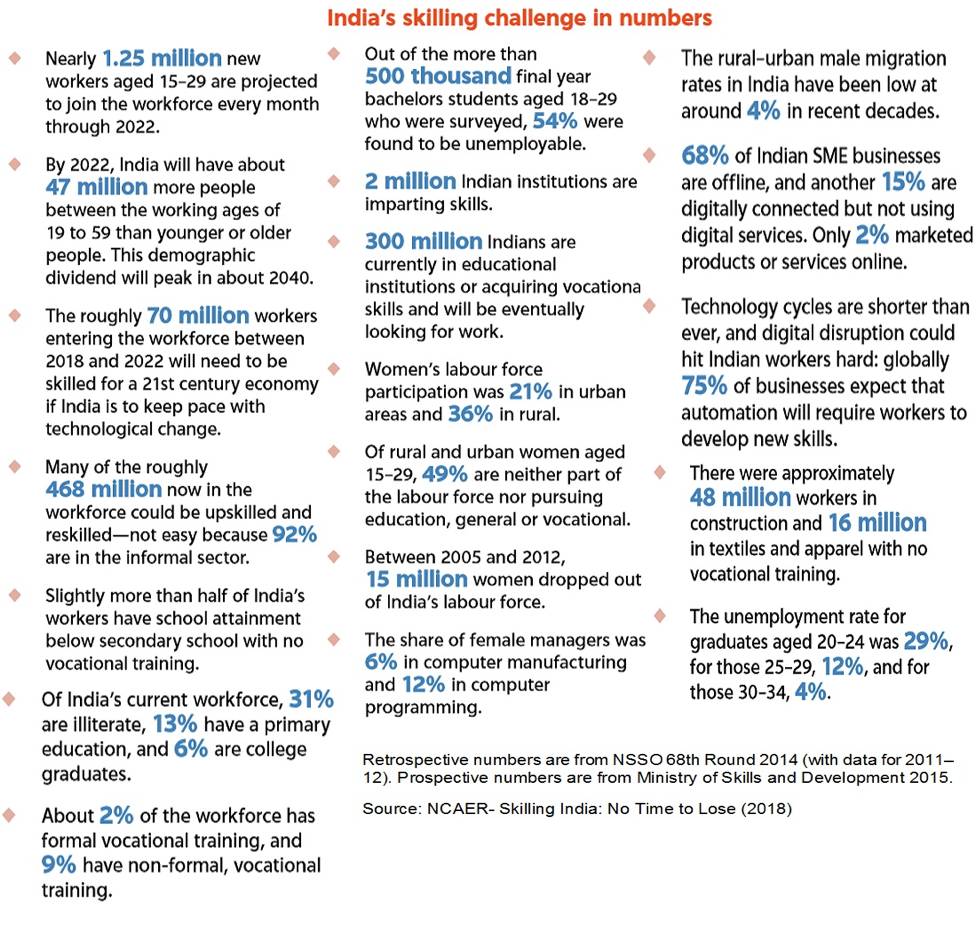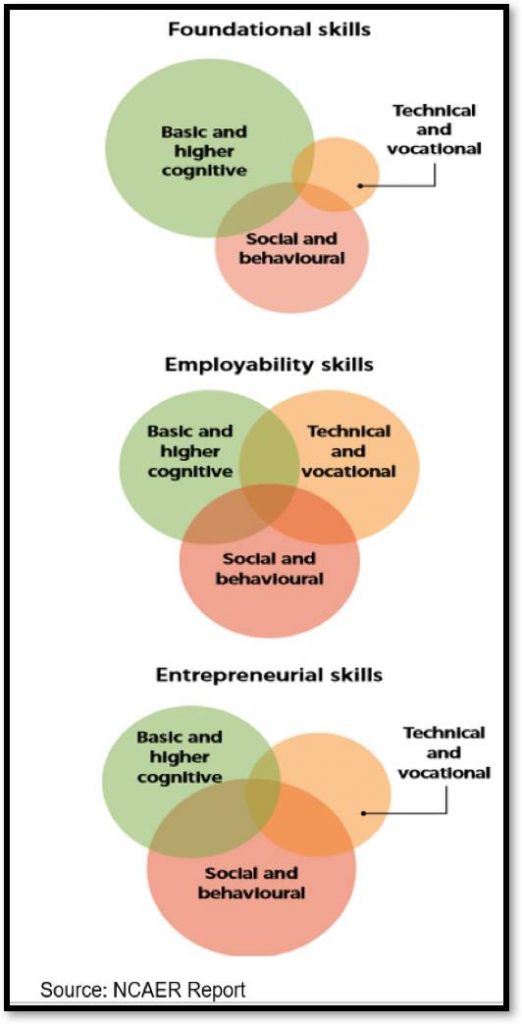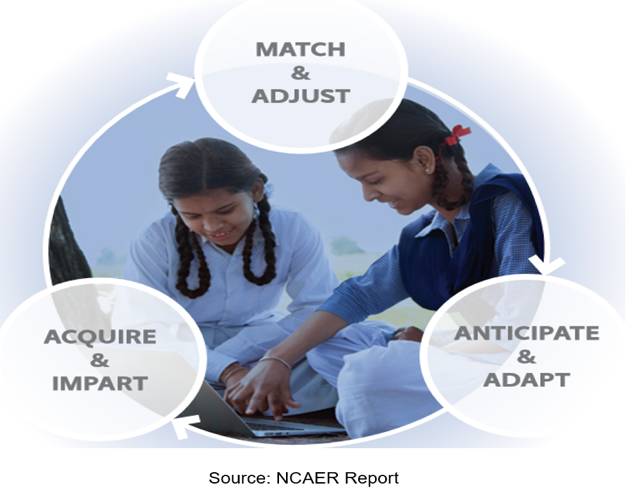As Indian workers make the shift from agriculture to
manufacturing and services, the discordance in skills and employability rings
loud. The NCAER’s 2018 report
‘Skilling
India: No Time to Lose’[i] is a clarion call and offers clear-cut solutions
for policymakers. The report strongly underlines skilling as the holy
grail to shape the future Indian workforce and states the next five years are critical to avoid playing catch-up to squandered opportunity and
unfulfilled skill needs.
India policymakers face complex skill challenges:
- Stimulating more well-paying jobs
- Establishing pathways to skill acquisition
- Matching skills to jobs
- Formalising a large unorganised workforce
The facts speak for themselves.


We strongly believe that with due diligence and proper mechanisms in place apprenticeships and other forms of vocational training hold a massive opportunity to alleviate India’s skills challenges. Apprenticeships are a proven method the world over for smoothening the transition of youth from education to work and India must act with great urgency to make apprenticeships a mainstream pathway to skilling and long-term employability.
Let’s pick out some of the challenges listed above.
- With close to 15 million new entrants annually to the country’s workforce, “India’s labour force will soon overtake China’s as the world’s largest…the country is struggling to generate opportunities for a workforce with the wrong skills.”- The Economist.[ii]
The opportunity to turn this heaving mass of a young and vibrant populace into an economic powerhouse has been described by the report as ‘rarely seen in human history’. But only if well-planned mass skilling (such as apprenticeships) is put into action. Policymakers need to grab this ‘demographic dividend’ by promoting the right kind of skill building to concurrently match the creation of good jobs.
- Simultaneously, the ubiquity of an informal workforce is equally challenging- an eye watering 92% of the 468 million currently in the workforce are in the unorganised sector. Reskilling or upskilling is a serious need of the hour to bring them into the fold of formal employment.
- There is a burning urgency to integrate vocational training and apprenticeships with mainstream education. Over half of Indian workers are school leavers below the secondary level. And with no vocational training. So what happens to them? They continue to feed the informal workforce. Construction for instance- a high growth sector for jobs- has approximately 48 million workers with no vocational training.
- India has the unwanted badge of being ranked 121st out of 131 countries in Female Labour Force Participation.[iii] This is a statistic no nation hankering for global standards in workforce development can choose to ignore. The Indian female workforce is made up of a vast majority of uneducated and unskilled women, again primarily in the unorganised sector. Providing equal access to skills-based training to this crucial subset of the population can become a game changer. A study found that India could increase its GDP anywhere between 16-60% by 2025 if only women were given equal employment opportunities.[iv] Affirmation for vocational training including apprenticeships comes from other studies[v] where skills-based training increased the likelihood of women joining the workforce regardless of educational levels.
- The pathos of youth unemployability is widespread with employability rates of graduates under 50% and as low as 30% for graduates in arts and commerce.[vi] So, what’s wrong? Is an archaic Indian education clearly not keeping up with the times?
Simplifying Skill Definitions
In recent times we have seen plenty of platitudes spouted around skills, which mean little unless qualified and quantified. Demystifying the skills problem in ways which can be easily addressed by policymakers will allay a lot of the existing muddle.
So what are the essential skill sets needed to be employable, and not just in employment? They are foundational, employability and entrepreneurial skills. Common to all three sets are technical and vocational skills which in essence are the physical and mental competencies to be good at performing specific tasks using suitable tools and processes in any occupation.


Circle of Acquiring– Matching–Anticipating Skills
This is a three-part framework arising from the above essential skill sets which forms the crux of this NCAER report and advocates actionable ways from each component to address the skill challenges. The report strongly recommends referring to this framework in future policy-making to augment the effectiveness of India’s skilling initiatives.


Next time
We’ll examine the first of the three-part framework – Acquiring & Imparting skills– necessitating an overhaul in mainstream education, vocational and technical education and on-the-job training.
References
[i] Main source: ‘Skilling India: No Time to Lose’- 2018- National Council of Applied Economic Research
[ii] “Ever more Indians are struggling to find work.” The Economist 2017
[iii] Precarious Drop Reassessing Patterns of Female Labor Force Participation in India, WorldBank Apr 2017
[iv] The Power of Parity: Advancing Women’s Equality in India- McKinsey Global Institute, 2015
[v] Women and Work in India: Descriptive Evidence and a Review of Potential Policies, Harvard Kennedy School, Dec 30, 2017
[vi] India Skills Report 2019- All India Council for Technical Education (AICTE), Association of Indian Universities (AIU) along with Wheebox, PeopleStrong and Confederation of Indian Industry (CII)















